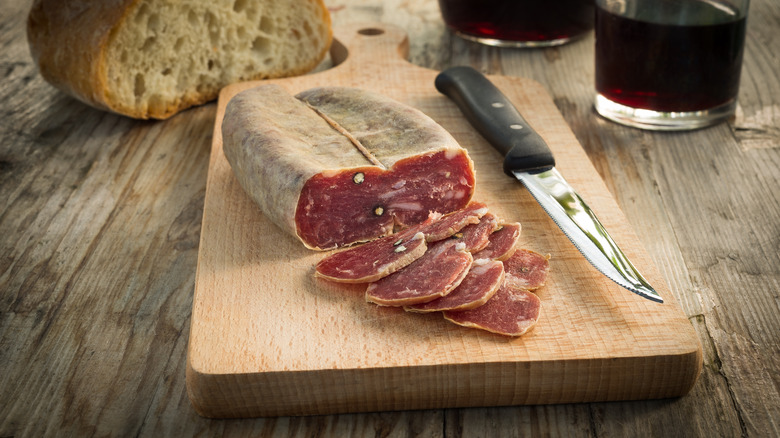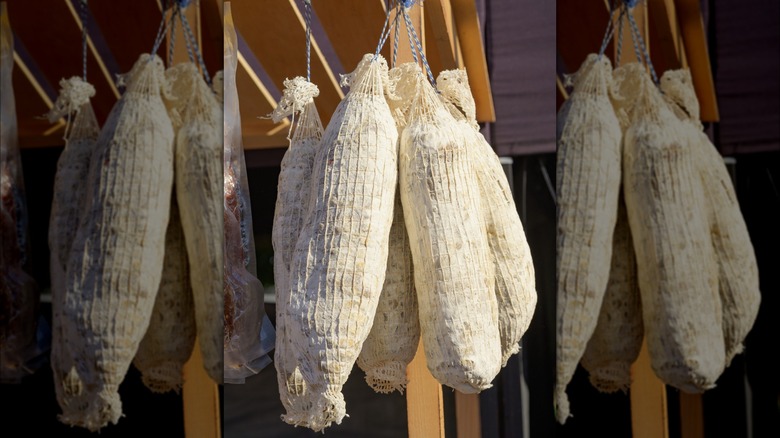What's That White Powdery Stuff On The Outside Of Your Soppressata?
By the time you bite into a classic muffuletta sandwich, the white rim around the edges of the soppressata may have been removed. Of course, it's also entirely possible that your sandwich is so all-consuming that you don't pause from chowing down to notice the thin coating on each slice of meat. But if you're sampling soppressata from a charcuterie board, you may find pieces that retain their original white outer layer, which can look like inedible mold at first glance.
That dusty coating is, in fact, mold, but that doesn't mean you can't eat it. In fact, a variety of edible foods containing mold exist, including cheese, tempeh, and soy sauce. In soppressata's case, that powdery white skin is penicillin, which is used in the process of making the meat in the first place. Toss aside your initial skepticisms about mold, because in this case, the penicillin actually protects your soppressata from bacteria, as well as from other, harmful types of mold. This type of barrier is scientifically called Penicillium nalgiovense or Penicillium salamii, and it also makes valuable contributions to the flavor and structure of the meat.
Mold must be managed when making soppressata
Back in the day (going all the way back to 40,000 BCE in Sicily), a barrier was a necessity to protect the meat as it cured, since soppressata was typically hung to dry for about a month after it had been packed. In those days, when they didn't have handy penicillin spray, sausages would be salted and covered with plant ashes to dry out the meat and create that valuable barricade. Today, however, logs are typically spritzed all over with a white penicillin mist.
So how can you tell the difference between mold that's safe to eat and mold that isn't? The former will be white, as we mentioned, while the latter can be blue, green, and fuzzy. But even if you do use penicillin while curing your meat, managing the mold is a crucial part of the process. If any of the bad stuff pops up, you can remove it with a towel doused with distilled vinegar, a method that may need to be repeated a few times while the soppressata dries. It's also important to use gloves when touching the logs in this stage, and to regularly sanitize your drying chamber.
If you're just interested in eating soppressata slices off a charcuterie board instead of curing the meat at home, simply scan them for that dusty white coating. If that's all you see, you're generally good to go.

